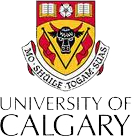Timelapse Image Analyzer for Data Encoding of Time-Series Images
Using a timelapse camera, scientists can track entities (such as people and wildlife) and conditions (such as weather and visibility) that occur in a particular place over time. Cameras are placed at strategic locations, where images are automatically taken at regular intervals (e.g., every 5 minutes, every hour), or via motion detection. After collecting the camera’s card, an analyst visually examines each image and counts/describes the entities and conditions of interest. The Timelapse Image Analyser helps scientists do this last visual analysis and counting step. In brief, the tool lets a coordinating biologist configure a series of ‘codes’ specific to the biologist’s project and to the sets of images that require analysis. An analyzer later opens an image set using the tool. As a first step, the tool automatically: goes through all images and extracts information it can such as dates and times; and categorizes unusual images including dark ones (night time) and corrupted images. As the second step, the analyst goes through the images, where he or she can fill in codes by either typing, or by selecting from menus, or (for counting) simply by clicking on items in the image. The tool also includes various means to simplify coding over a group of images as well as data correction. To help the biologist find items of interest in the image, the tool includes a magnifying glass, pan and zoom capabilites (where switching images will keep the same pan/zoom levels), as well as several image enhancement methods. All data is written to a file that can be opened in Excel.



